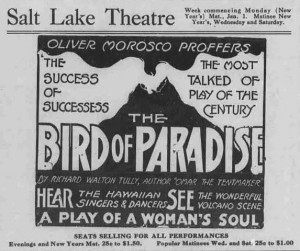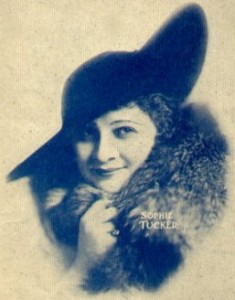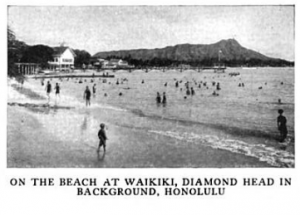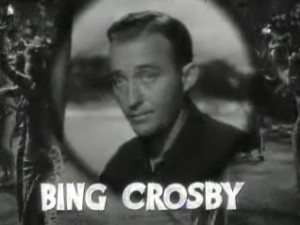Hapa-haole technically means half-foreign, or half Hawaiian and half something else. Musically the term refers to a type of music founded on traditional Hawaiian mele with something added. James Revell Carr suggests King Kalākaua sponsored hula ku`i, a new style of hula accompanied by western instruments, including the guitar, banjo, violin, accordion, and ukulele. From there, it was a short hop to what became hapa-haole Hawaiian music.
Joseph Kapeau Ae`a, a member of the Royal Hawaiian Band, was an early composer in the new genre. In 1881 he composed a classic hula ku`i – Ke `Ala Tubarose, more commonly known as the Hilo March. A film of the Danish musical group called the Four Hawaiians playing the Hilo March is available on YouTube here.
Sonny Cunha wrote the first well-known hapa haole song My Waikiki Mermaid in 1903. The lyrics evoked everyone’s Hawaiian fantasies. Cunha was one of the first Hawaiian entertainers to tour on the Mainland with his own group.
Every evening I meet her
On the beach at Waikiki I greet her
Nothing sweeter nor neater
Than my mermaid of the southern seas
Chorus: Auwë ta hu-a
Should you see her in bathing
She would surely set you all a raving
Rubber necking heart breaking,
Pretty mermaid of the Southern seas.
Chorus: Auwë ta hu-a
You should see her by moonlight
She’s the cutest little thing that’s living
Kisses giving high living,
Pretty mermaid of the Southern seas.
Chorus: Auwë ta hu-a
Should you ever go riding
Don’t be foolish let her do the driving
Nothing doing just cooing,
Pretty mermaid of the Southern seas.
In 1926 the MacDowell Sisters recorded My Waikiki Mermaid. You can listen to it on You Tube here.

In 1912 Bird of Paradise opened on Broadway featuring five Hawaiian entertainers. The New York Times called the music “weirdly sensuous.” The play toured extensively in the United States and Europe
But it was the Panama-Pacific Exposition held in 1915 San Francisco that made what Americans called Hawaiian music nationally popular. A troupe of Hawaiian musicians called the Royal Hawaiian Quartet and led by George E. K. Awai performed in the Territory of Hawaii Pavilion.
The song fueling the new craze was On the Beach at Waikiki by Charles Kaipo. Listen to it here.
“Honi kāua wikiwiki,” sweet brown maiden said to me
As she gave me language lessons on the beach at Waikiki.
“Honi kāua wikiwiki,” she then said and smiled in glee
But she would not translate for me on the beach at Waikiki.
“Honi kāua wikiwiki,” she repeated playfully
Oh those lips were so inviting on the beach at Waikiki.
“Honi kāua wikiwiki,” she was surely teasing me
So I caught that maid and kissed her on the beach at Waikiki.
“Honi kāua wikiwiki” you have learned it perfectly.
“Donʻt forget what I have taught,” said the maid at Waikiki.

Hawaiian records sold more than any other type of music, and the song writers at Tin Pan Alley began churning out as many Hawaiian inspired tunes as they could.
One of these tunes was Making Wicky Wacky Down in Waikiki, recorded by Sophie Tucker in her suggestive style. Listen to her rendition here.
Pack up your troubles, come on along,
Where nights are dreamy and life’s a song;
In Honolulu across the sea,
Makin’ wicky-wacky down in Waikiki.
*
Those hula dancers are sure good news,
Those joy dispensers a cure for the blues;
It’s absolutley the place to be,
Makin’ wicky-wacky down in Waikiki.
*
No evening clothes,
Anything goes,
Believe it or not!
And when the night shadows fall,
That’s when they’re all
Getting hot,
On the ukelele!
*
They use a moonbeam to light the night,
And every tune seems to sound just right!
It’s absolutely the place to be,
Makin’ wicky-wacky down in Waikiki.
*
Come with me, all you wooky makers,
All you wideawakers, join me!
Oh boy, I’ve just found a spot,
Uh-huh, you’re gonna like it a lot!
*
And it’s far away, hope in Honolulu,
Where the hula-hula greets you.
Hawaii’s the place,
Get a smile on your face!
*
And I wanna go where they shake their hips,
That’s where the sailors all shake their ships!
You wouldn’t blame me if you could be
Makin’ wicky-wacky down in Waikiki.
*
You get a feeling of pure delight,
Your head is reeling, your heart is light,
Your eyes are dancing with revelry,
Makin’ wicky-wacky down in Waikiki.
*
You never saw
Dresses of straw
Like they’re wearin’ there!
And all those dances they do,
There’s nothing you
Can compare;
What a revelation!
*
Hawaiian cuties with goo-goo eyes,
And they’re beauties, you’d be surprised!
You’re never lonesome for company,
Makin’ wicky-wacky down in Waikiki.

Harry Owens arrived in Hawai`i in 1934 as music director of the Royal Hawaiian Orchestra at the Royal Hawaiian Hotel. Owen became a father that October and wrote a song for his new daughter. Sweet Leilani became the orchestra’s signature song.

Two years later vocalist Bing Crosby and his wife Dixie Lee vacationed in Hawai`i. Crosby wanted to include Sweet Leilani in his 1937 movie Waikiki Wedding. It turned out to be a turning point Crosby’s career. Sweet Leilani won the Academy Award for Best Original Song. Crosby’s recording became his first Gold Record. You can listen to Bing sing Sweet Leilani on here.
Sweet Leilani, Heavenly flower,
Nature fashioned roses kissed with dew,
And then she placed them in a bower,
It was the start of you.
*
Sweet Leilani, Heavenly flower,
Tropic skies are jealous as they shine
I think they’re jealous of your blue eyes
Jealous because you’re mine
*
Sweet Leilani, Heavenly flower,
I dreamed of paradise for two
You are my paradise completed
You are my dream come true.
Owens and his orchestra performed Sweet Leilani in Fred MacMurray’s 1938 movie Coconut Grove. The unique sound was for many Americans the sound of Hawai`i.
Owens made the steel guitar an integral part of the new Hawaiian sound. He took his band and other entertainers, often including Hilo Hattie, touring on the Mainland. His motto: All Hawaiian, All the Time.
Owens did an even greater service to Hawaiian music by transcribing ancient and twentieth century Hawaiian songs into musical notation. Owens received the Na Hoku Hanohano Lifetime Achievement Award in 1987.
Acknowledgements:
Featured Image: Surf Riding at Waikiki by Frank Coffee. Public Domain. Wikimedia Commons.
James Revell Carr. Hawaiian Music in Motion. University of Illinois Press. 2014.
Amy K. Stillman. Early Hapa Haole Songs. November 13, 2011. Blog.
Hapa Haole Songs. Lyrics to Hawaiian Songs Written in English 1916-1978. Here.
Makin’ Wicky Wacky in Waikiki by James Cavanaugh, Billy Curtis, Burton Lane, and Al Hoffman.

Sandra Wagner-Wright holds the doctoral degree in history and taught women’s and global history at the University of Hawai`i. Sandra travels for her research, most recently to Salem, Massachusetts, the setting of her new Salem Stories series. She also enjoys traveling for new experiences. Recent trips include Antarctica and a river cruise on the Rhine from Amsterdam to Basel.
Sandra particularly likes writing about strong women who make a difference. She lives in Hilo, Hawai`i with her family and writes a blog relating to history, travel, and the idiosyncrasies of life.

